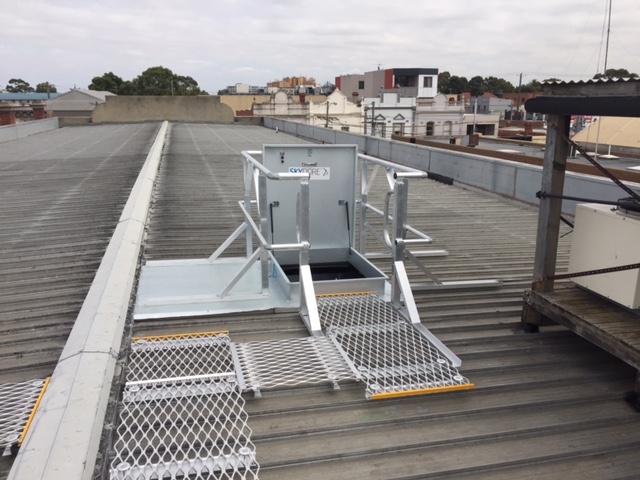The roof of a building acts as the first line of defence against the elements, safeguarding the structure and its occupants from wind, rain, snow, and extreme temperatures. A well-maintained roof ensures the building's integrity and contributes to energy efficiency and occupant comfort.
On the other hand, neglecting a roof can lead to expensive and time-consuming problems.
This guide is for builders, roofers, and designers—those directly involved in roof construction, maintenance, and design. It outlines essential tips for keeping roofs in top shape, minimising the risk of future problems, and maximising their lifespan.
Hazards of a Neglected Roof
A neglected roof can cause far-reaching and financially straining problems. Here are some of the key hazards to consider:
Water Damage
Leaking roofs are a major concern. Water intrusion can seep into the building structure, leading to mould growth, rot, and deterioration of building materials like drywall and insulation.
This causes significant structural damage and extensive repairs in the long run. Additionally, mould growth poses health risks to building occupants.
Reduced Energy Efficiency
A compromised roof can negatively impact energy efficiency. Damaged or missing shingles can allow conditioned air to escape in the summer and warm air to enter in the winter, forcing HVAC systems to work harder to maintain comfortable temperatures. This translates to higher energy bills for building and homeowners.
Increased Risk of Collapse
Over time, a neglected roof can lose its structural integrity. This is particularly true in areas prone to heavy snowfall or strong winds. A roof collapse can be catastrophic, causing injuries, property damage, and even fatalities.
Safety Hazards
Loose or missing shingles, damaged flashing, and deteriorated roof decking pose a serious safety hazard to anyone working on the roof. Slips, falls, and potential punctures from exposed nails can occur.
Essential Roof Maintenance Tips
A more proactive approach to roof maintenance helps prevent these hazards and ensures roof longevity. Here are some essential tips for businesses and homeowners:
Tip #1: Regular Inspections
Schedule twice-a-year roof inspections at the very least. Qualified inspectors can identify minor issues like missing shingles, loose flashing, or signs of wear and tear before they become major problems. Early detection allows for prompt repairs, minimising water damage and other issues.
Tip #2: Debris Removal
Accumulated leaves, branches, and other debris on the roof surface can trap moisture and create a breeding ground for mould and mildew growth. Additionally, clogged gutters cause water to overflow and compromise roof integrity. Regularly clear leaves and debris from the roof surface and gutters. We recommend working with professional cleaners for a safer and higher-quality cleaning.
Tip #3: Shingle Check
Shingles, the protective outer layer of the roof, are susceptible to damage over time. During inspections, pay close attention to shingles for signs of wear and tear, like missing pieces, cracks, curling edges, or blistering. Promptly replace damaged shingles to prevent leaks.
Tip #4: Gutter Maintenance
Gutters are crucial in directing water away from a building's foundation. Ensure gutters are free of debris throughout the year. Clogged gutters cause water to overflow, damage to roof and fascia boards, and foundation problems. Regularly clean gutters and downspouts, ensuring proper water flow. If you suspect damage to your foundation, it’s essential to have it evaluated by experts like Xpert Foundation Repair. A professional assessment ensures that any issues are accurately diagnosed and effectively addressed, safeguarding the stability and integrity of your home.
Tip #5: Flashing and Seals
Flashing creates a watertight seal and prevents leaks. Inspect flashing for any cracks, tears, or loose sections. Damaged flashing should be addressed promptly to maintain a watertight barrier. Additionally, inspect roof seams and seals for signs of deterioration and reseal if necessary.
Tip #6: Ventilation
Proper attic ventilation is essential for healthy roof function. Ventilation regulates attic temperature and moisture levels, preventing condensation build-up that can damage the roof deck and promote mould growth. Ensure adequate ventilation by checking soffit vents and ridge vents for functionality.

Using Roof Hatches
Safe and efficient access to the rooftop is essential for proper maintenance and repairs. Walking directly on the roof surface can be dangerous, especially on steep inclines or wet surfaces. Roof hatches offer a designated access point, eliminating the need for precarious methods and reducing the risk of falls.
Here's how roof hatches benefit builders, roofers, and designers:
- Improved Safety: Roof hatches provide a safe and controlled access point for workers to enter and exit the rooftop. This minimises the risk of slips, falls, and injuries from navigating the roof surface.
- Increased Efficiency: Using a roof hatch saves time and effort compared to traditional methods of roof access, like ladders or makeshift solutions. This means increased productivity for workers performing maintenance or repairs.
- Enhanced Aesthetics: Roof hatches offer a clean and professional look compared to creating a temporary access point by cutting into the roof. This is a significant consideration for commercial properties or high-end residential developments.
For this reason, roof hatches are important building elements in commercial construction. The BAC-GS roof hatch is a great example of a high-quality roof access solution designed for functionality and safety. Regardless of your preferred maintenance and cleaning techniques, roof hatches give you easier and safer access to roofs.
Wrapping It Up
A proactive approach to roof maintenance extends building longevity, enhances occupant safety, and improves energy efficiency. By following the tips in this guide, builders, roofers, and designers can contribute to a roof's long lifespan and minimise the risk of future problems.
Using roof hatches provides a safe and efficient means of accessing the rooftop for maintenance and repairs, improving worker safety and overall job site efficiency. Remember, a well-maintained roof is crucial for a healthy and secure building environment.

